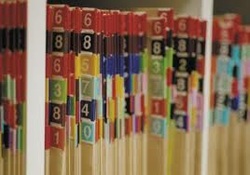 I recently extolled the virtues of going paperless for your record-keeping. What I didn't talk about was how you handle the backend of things, where do all these electronic files reside so that you can access them. The traditional way was to buy a server, set up a local network, connect all your computers to the network, and file everything on the server. To go offsite you, set up a virtual private network on your server that you could log into from anywhere there was Internet access. (This could get tricky.) $10,000 would get the job done, and it would last seven years with a $1,000 or more per year in maintenance and updates. Only large firms need or can afford this solution. Dropbox (or similar) is the new 'cloud' alternative to having your own file server. Dropbox is free for up to 2GB of storage and can be increased to 18 GB by getting friends to sign up too (500MB per referral). 2 GB might be enough storage for your work in progress unless your files include a lot of pictures and video. In any event you may be able to stay in the free arena indefinitely if you archive inactive files in Evernote. See the Evernote discussion in Part 2. You use Dropbox just the same as a file server. Once installed it shows up in your file folders, where you can set up sub folders as you like. Wherever you are, if you can get on the Internet even by 3G, you have access to your files. Smart phones and tablets work the same except access is through the Dropbox app. Or you can get access through a web browser on any computer. The first time that you access a drawing on a constructions site with your phone, you will catch yourself smiling. It is easy to share folders or files. Folders and sub-folders can be arranged the same way you are accustomed to. You can search your files, too, to find what you need, but I find a strong folder structure works best. Dropbox isn't the only choice. It is just the one I use and am most familiar with. Other Cloud services that work similar to Dropbox are Microsoft SkyDrive, Google Drive, Box, Apple iCloud or SugarSync. The list could go on. While technically your cloud data is safe and backed up, I have a 1 Tb hard drive security blanket that also holds everything that is on Dropbox. Your computer's hard drive might work just fine. Another piece of equipment that you might need to be paperless is an all-in-one printer/copier/scanner - forget fax. People are still going to send you paper, but you don't have to keep it. Scan it and file it away. You could use your phone's camera for this. But eventually you will tire of photographing multipage documents, getting the documents to lay flat, and illuminating them evenly and brightly. One last thing to consider, if filing all this digital stuff is a group activity, is an old-school paper attachment or coded directions for filing. This way you can indicate where you want something to go without being the person who does the scanning and filing. Or at least batch up the scanning/filing until you are in the mood. I found that a handwritten coded instruction works very well, often written on a post-it so the original remains pristine. "S/F-FAX/backstage" is an example. This 'says' to Scan and File the document in the Fine Arts Expansion project folder in the 'backstage' sub-folder. This code only works if you know the file folder scheme by heart. Otherwise you might need to paper clip a completed filing checklist to the document. In the next article, I will discuss how Evernote fits into the paperless process, and will give you some solutions for Individuals, Small Teams, and Big Teams. Comments are closed.
|
x
Archives
February 2024
Categories
All
|
Architekwiki | Architect's Resource | Greater Cincinnati
© 2012-2022 Architekwiki
© 2012-2022 Architekwiki






